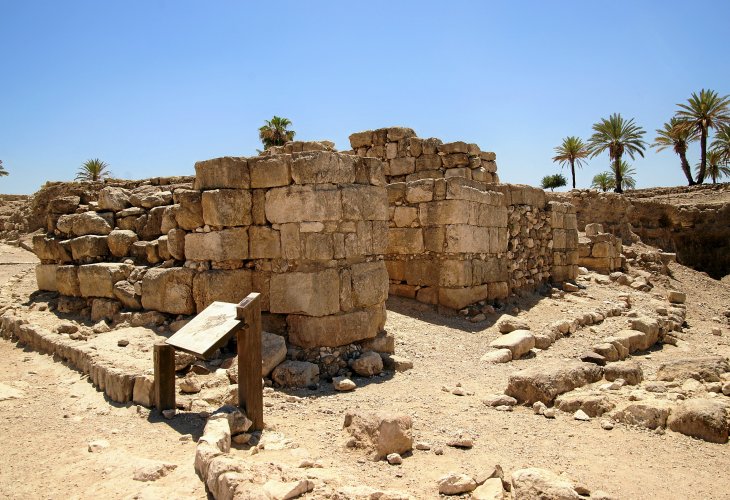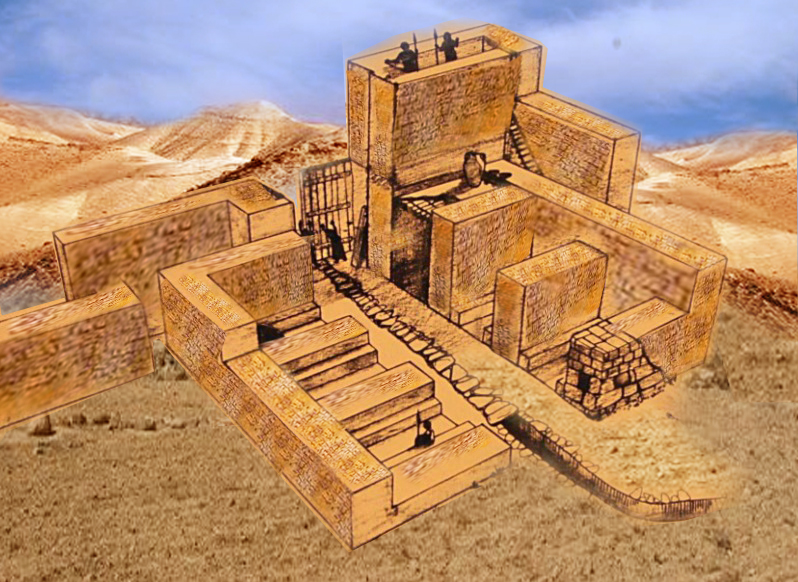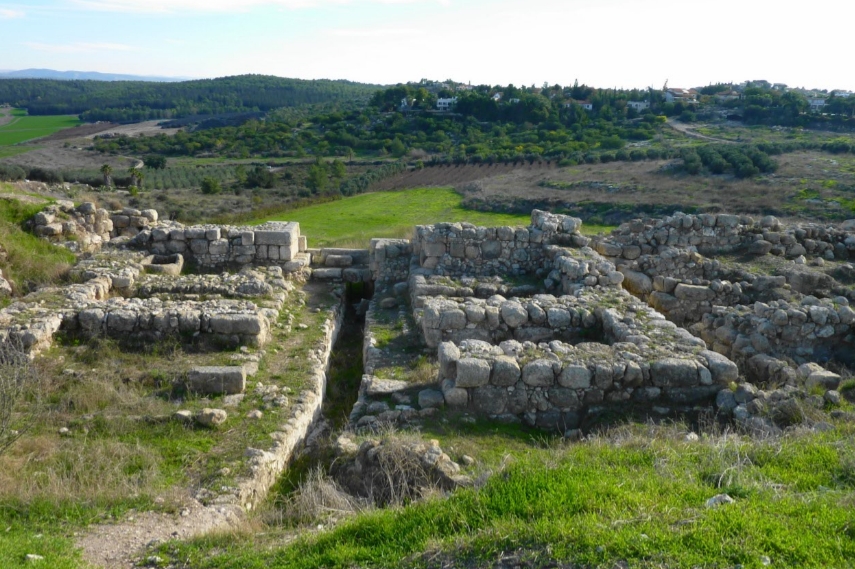Unlocking Ancient Mysteries: The Gates of King Solomon
What role did ancient city gates play? An exclusive chapter from Rabbi Zamir Cohen's latest book sheds light on their significance.
 Solomon's Gate in Megiddo
Solomon's Gate in MegiddoProfessor Yigael Yadin, a leading figure in biblical archaeology in Israel, conducted in-depth research on Hazor, Megiddo, and Gezer, earning international recognition for his findings. In his book "Hazor: The Head of All Those Kingdoms," and the article "The Wall and Gate of Gezer in the Days of Solomon," Yadin describes the significant importance of these discoveries: In each of these three cities, an identical gate structure was uncovered—reflecting an innovative design for its time, with six rooms. Yadin dated these to the era of King Solomon. This gate structure was also found in other significant Israelite cities from the First Temple period, such as Lachish.
The so-called "Solomon's Gate" was typically built as follows: A wide main gate was constructed within the wall, flanked by guard towers. Inside the city, six adjoining chambers or rooms were built close to the gate, three on each side. A long casemate wall, a double wall with an interior divided into rooms, ran perpendicular to the gate, used for housing guards, residents, or storage.
Digging Guided by the Bible
Professor Yigael Yadin, one of the greatest archaeologists who excavated in Israel in the 20th century, vividly expresses his confidence in the truth of the biblical account, to the point where he foretold his workers what would emerge from digs at Megiddo and Hazor: "The truth is, our main guide was the Bible. As an archaeologist, I can't imagine a greater thrill than working with a Bible in one hand—and a trowel in the other. This was the key to our discoveries from Solomon's period. Not only were our conclusions regarding Solomon's works confirmed by the text, but the authenticity of the biblical description of Solomon's activities at Hazor and Megiddo was also affirmed, to our great joy."
 Reconstruction of Solomon's Gate in Gezer
Reconstruction of Solomon's Gate in Gezer"I vividly recall the trick we used to impress our workers. Before the outline of the gate was even exposed, we marked the design of the Megiddo gate on the ground in Hazor, and placed stakes to signal corners and walls. We then instructed the workers to excavate according to these markers and told them, 'Here you'll find walls' or 'Here you'll find rooms.'
"When our 'prophecies' were confirmed, our prestige soared among the workers—they saw us as magicians. However, our workers, mostly elderly immigrants from North Africa unfamiliar with the Bible, when we read to them the biblical story about Solomon's activities at Hazor, Megiddo, and Gezer, our standing fell, while the Bible's respect rose sky-high."
The Biblical City Gate: The Heart of Urban Life
In many places, biblical writings suggest that city gates were used not only for the entrance and exit of residents but also for public assembly for trade and, by learned Torah scholars, for judgment. As written in Deuteronomy: "Judges and officers you shall appoint in all your gates."
And in the Book of Ruth: "For all the gate of my people know... and Boaz went up to the gate and sat down there... he took ten men of the elders of the city and said, 'Sit here,' and they sat down... Boaz said to the elders and all the people... that the name of the dead may not be cut off from his brethren and from the gate of his place. You are witnesses today. And all the people that were in the gate, and the elders, said, 'We are witnesses.'"
And regarding the verse "Our feet were standing within your gates, O Jerusalem," the sages say: "What caused our feet to stand firm in war? The gates of Jerusalem that engaged in Torah." This indicates that city gates were regular venues for Torah study.
Archaeologist Professor Yosef Garfinkel explains: "An open area was left in the city near each gate... This area near the gate likely served as a marketplace, a meeting place for people, fitting the biblical expression 'market square at the gate' and possibly 'in the gate'. In ancient biblical cities, there were no public areas like the forum in a Roman city, a piazza in a medieval European city, or a mall in a modern city today. The gate area was the city's beating heart, as it was the gateway for everyone entering and leaving the settlement. It was a meeting place for people from rural areas with other rural folks and with city dwellers. Near the gate, they would meet on market days when farmers from the surroundings brought agricultural produce. Thus, the prophet Elisha announced that 'at this time tomorrow a seah of fine flour will sell for a shekel and two seahs of barley for a shekel at the gate of Samaria.' City residents could also bring to the gate market products they crafted in their workshops, like ceramic vessels, metalwork, jewelry, etc."
 Remains of Solomon's Gate in Gezer
Remains of Solomon's Gate in Gezer"Elders of the city sat at the gate and adjudicated disputes brought before them. Thus, we read of the 'woman of valor' that while she busied herself with household chores, 'her husband is known in the gates when he sits among the elders of the land.' In city gates, altars for worship were installed, and it was at the city gates that prophets stood to deliver their rebukes to the people."
Observing most of today's existing city gates, such as the Dung Gate in Jerusalem's wall near the Western Wall, it's hard to envision how such a gate served as a gathering and judicial place. Even the chamber at Jaffa Gate seems too narrow and small to function as both a passageway and a gathering spot. However, uncovering Israel's ancient city gates illuminates our understanding of biblical verses. It turns out that flanking the entranceway of Israelite city gates were cells, rooms, and courtyards. These cells-rooms served during peacetime as gathering places for trade, Torah study, and judgment. Along the entry axis, between cell to cell, was an additional gate providing defense during emergencies. If the main gate's doors were breached, invaders would face another locked gate. This ensured the city's residents the protection of their city.
To purchase the book "Biblical Archaeology III" at Hidabroot Shops,click here.
To purchase the Biblical Archaeology trilogy set at Hidabroot Shops, click here.

